Case Studies.
Add Case Study
Our Case Study database tracks 22,657 case studies in the global enterprise technology ecosystem.
Filters allow you to explore case studies quickly and efficiently.
Download Excel
Filters
-
(6,653)
- (2,601)
- (2,127)
- (945)
- View all
-
(5,642)
- (2,469)
- (1,692)
- (826)
- View all
-
(5,571)
- (2,178)
- (1,766)
- (643)
- View all
-
(5,247)
- (2,179)
- (1,715)
- (1,321)
- View all
-
(2,881)
- (1,448)
- (574)
- (376)
- View all
- View all 15 Technologies
- (1,985)
- (1,985)
- (1,915)
- (1,679)
- (1,629)
- View all 42 Industries
- (8,728)
- (4,742)
- (3,618)
- (3,233)
- (2,947)
- View all 13 Functional Areas
- (3,304)
- (2,787)
- (2,603)
- (2,006)
- (1,630)
- View all 129 Use Cases
- (13,581)
- (5,296)
- (4,272)
- (3,520)
- (2,856)
- View all 9 Services
- (504)
- (432)
- (416)
- (382)
- (301)
- View all 1083 Suppliers
Selected Filters

|
Virtual Insights with CloudLens: European ISP Extends Visibility into Virtualized Infrastructure
Proximus, the largest internet service provider (ISP) in Belgium, embarked on a network function virtualization (NFV) initiative in 2018. The project involved deploying various telecommunication applications using a cloud infrastructure, including virtual IP multimedia subsystems (vIMS), and software-defined wide area networking (SD-WAN). However, migrating complex physical ISP networks to a new network with virtualized functions was a long-term project, taking several years. During this transition, Proximus faced the challenge of maintaining the same visibility and analytics across both physical and virtual functions. The company had deployed several traffic analytics probes that relied on physical taps, tap aggregation switches, and Keysight Vision network packet brokers in the legacy environment. However, in the new virtual environment, network functions ran as virtual machines (VMs) on the same physical server, and the east-west traffic did not cross any of the physical links where the physical taps would have been located. Proximus needed to maintain the same level of visibility in the virtual environment as in the physical one, while also containing the total cost of ownership.
|
|
|

|
CIRA's Expansion into Cybersecurity with Akamai Secure Internet Access Business
The Canadian Internet Registration Authority (CIRA) was established in 2000 with a mandate to run a safe, secure, and reliable .CA domain for all Canadians. With over 2.8 million domains under management, CIRA saw an opportunity to complement its registry revenue with new services. In 2015, CIRA moved into DNS cybersecurity with the introduction of D-Zone Anycast DNS, a service now used by ISPs, the Canadian government, and many educational institutions. However, after the release of this service, many of CIRA’s customers requested a recursive DNS Service, particularly organizations in the education sector who were interested in a service with content filtering. CIRA considered building a recursive DNS service solution in-house but realized the real value was in a threat feed, which they couldn’t develop on their own.
|
|
|
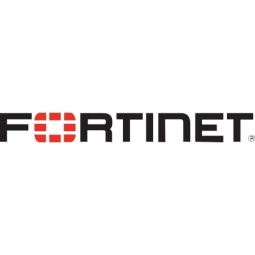
|
Data and Technology Company Acxiom Enhances Customer Data Protection with Fortinet
Acxiom, a company that designs and delivers customer intelligence solutions, is heavily invested in digital technology. With a business built on the ethical use of data, Acxiom faces the challenge of constantly evolving security threats. The company needed to ensure the protection of its customer data and insights into customer behavior. The challenge was to find a partner that could provide cutting-edge and next-generation technologies to keep up with the ever-changing threat landscape. Acxiom required a solution that could not only defend against attacks but also align with the different changes in the threat landscape.
|
|
|
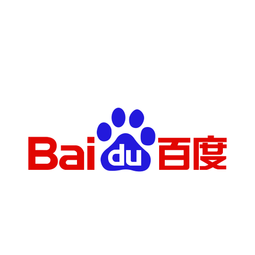
|
Baidu Cloud Supports Gian in Quality Assurance
As a leading manufacturer of precision parts in China, Gian Technology's customers include Samsung, OPPO, Vivo and other well-known enterprises. They have very high requirements for the precision and appearance of products. Every year, Gian invest a substantial amount of capital in manpower and capital in quality control and quality inspection. The "original" method of the traditional naked eye + magnifying glass is intensive and boring, making many young people reluctant to choose this job. The gap between business volume and manpower is getting bigger and bigger, and it is difficult to meet the quality inspection needs in three shifts and eight hours. Overtime is a common occurrence.
|
|
|
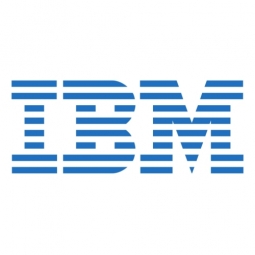
|
Leveraging AI to Upgrade Product Quality Management in Speed and Accuracy
To succeed in the fiercely competitive LCD manufacturing industry, CSOT must deliver high-quality products within a tight time frame, but time-consuming product inspections have hampered its agility. Quality inspectors had to inspect each LCD screen individually to check for flaws. This takes quite a bit of time.
|
|
|
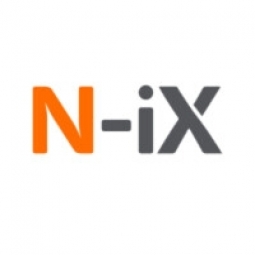
|
Expanding Battery Management Services to Embedded Systems
The client, a battery management solution provider, wanted to expand their market reach by making their solution compatible with embedded platforms. Their solution, which monitors individual cells within lithium-ion batteries, was not optimized for use on embedded platforms with microcontrollers. The solution could either be integrated as part of the Battery Management System (BMS) or operate independently on Docker or the cloud. Customers could retrieve data from the BMS for a specific time period, save it into a file, and incorporate it into the algorithm. The algorithm would then analyze the data and determine which cells work well and which do not. However, the client needed to analyze and prepare the solution for implementation on embedded systems.
|
|
|
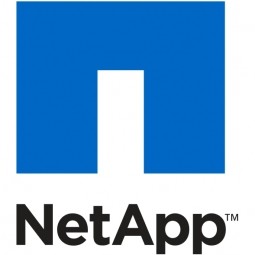
|
Mellanox Technologies: Leveraging Cloud for Data-Driven Solutions
Mellanox Technologies, a multinational supplier of computer technology networking products, was facing challenges with its testing, research, and design infrastructure. The company, with multiple manufacturing sites worldwide, needed an infrastructure that was engineered for integration, easy data sharing, scalability, and unified support. The existing system was not providing the performance and reliability required to accelerate product innovation. Mellanox also needed to reduce the time to market for its products, including adapters, switches, software, cables, and silicon products for markets such as high-performance computing. The company was in search of a unified solution that was reliable, scalable, and cost-effective.
|
|
|

|
Raima RDM Embedded Database: A Game Changer for Offshore Applications
Aker Solutions, a global leader in providing subsea production control systems for the oil and gas industry, was facing a challenge with the increasing sophistication of its products and control technologies. The offshore oil and gas production environment is one of the most demanding engineering environments, and the rising complexity of Aker's products was creating a growing need to store, manipulate, and share data across networks of devices located on the seabed, on production platforms, and onshore. To meet the demands of future product generations, Aker Solutions identified the need for a new database management system that could handle high volumes of data, be compatible with embedded and conventional systems, and maintain data integrity in the offshore environment where communication links may suffer disruption and interruption.
|
|
|

|
Streamlining Business Transformation with OpenText and MS Office Integration
The client, a rapidly growing global company specializing in business transformation through various solutions and services, was seeking to enhance their services to better meet the needs of their key customers. The company, with over 4,500 skilled professionals and 30+ offices worldwide, provides ICT services and solutions based on a wide range of technologies, including OpenText, SAP, Microsoft, etc. The primary challenge was to integrate OpenText Extended ECM, an enterprise CMS platform that securely governs the information lifecycle by integrating with leading enterprise applications, with Microsoft Office 365. This integration was aimed at expanding the company's services and better matching the needs of its customers.
|
|
|

|
InfoTrack: Enhancing Data-Driven Innovation with Elasticsearch Service
InfoTrack, a legal technology company, was facing challenges in managing its IT system log data and legal document data for its customers. The company was initially using Amazon Elasticsearch Service, but it ran into security and performance issues. The version of the Elastic Stack used by Amazon Elasticsearch Service only allowed security using IP restriction and restricted developers from tuning the underlying Java Virtual Machine (JVM). Additionally, InfoTrack lacked access to additional features of the Stack, including APM, Index Lifecycle Management (ILM), and Graph. This limited their potential in architecting their system for long-term success and stability, and ensuring they were getting the most value out of the data available to them. Furthermore, the company was struggling with manual logging, which became too time-consuming as InfoTrack grew and didn’t allow developers to trace and debug applications.
|
|
|
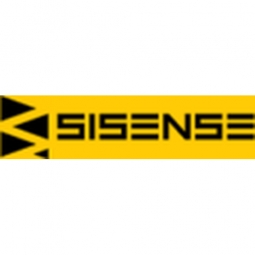
|
Transforming Data Reporting: Profusion's Journey with Sisense
Profusion, a data science and marketing services company, was grappling with the challenge of slow and reactive reporting for its clients. The company wanted to transition its clients from relying on manual, Excel-based reporting to a more proactive, real-time optimization. A specific challenge was presented by a London creative agency, which required Profusion to develop a solution for reporting ticketing data to its client, an international live show production company. The agency had two requirements: an intuitive interface to communicate financial investment and return through different marketing channels, and the ability to query a single customer view of its customer and extract this data for use within its other business tools. The existing process was labor-intensive, with information only available sporadically or on the client’s request.
|
|
|

|
Transfinity VR: A Seamless Integration of VR and Motion Platform
Virtec Attractions, a company specializing in dynamic 4D attractions and VR solutions, aimed to provide users with a new type of entertainment by combining an immersive demo experience with their Transfinity motion platform. The main challenge was to create a smooth, fully integrated VR experience with the motion platform that would not cause motion sickness or discomfort to users. Another challenge was the rapid development and change of VR devices. As soon as a more advanced headset was brought to market, the development team had to adjust the software to the new hardware. This constant need for adaptation and improvement posed a significant challenge.
|
|
|

|
Empowering Billings City with Digital Transformation: A Case Study
The City of Billings, Montana, the largest city in the state, provides reliable water distribution, wastewater collection and treatment, and garbage collection to its population of 110,000 people. The city was facing challenges in meeting evolving customer expectations and delivering a high-quality customer experience. Their initial attempt at an online payment platform was limited in functionality, focused solely on bills, and was cumbersome to use. The platform was not user-friendly and did not meet the needs of a wide range of customers, some of whom were tech-savvy while others preferred more traditional solutions. The city was receiving a high number of customer calls and complaints related to bills and payment issues. Therefore, they were in need of a platform with self-service solutions to help resolve these common customer issues online.
|
|
|

|
Wind River's IoT Solution Powers Toshiba's Next-Gen Retail System
Toshiba was faced with the challenge of building the next generation of its TCx™ Sky retail optimized operating system. The new system needed to provide stability, security, and performance for today’s widely distributed Point of Sale (POS) systems and also serve as a foundation for emerging IoT innovations such as biometrics and anonymous facial recognition. With TCx Sky powering over a million checkout lines and running a streamlined embedded Linux kernel suitable for retail applications, Toshiba needed a technology partner to help it keep up with the constant evolution and security monitoring associated with embedded Linux deployments. The challenge was further compounded by Toshiba's diverse customer base, which necessitated the constant release of new products to keep up with the latest silicon and security features.
|
|
|
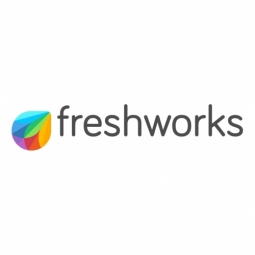
|
Seamless Collaboration and Knowledge Sharing in Adelaide City Councils with Freshservice
In 2018, three large metropolitan councils based in Adelaide, the Cities of Charles Sturt (CCS), Marion (COM), and Port Adelaide Enfield (PAE), formed a collaborative partnership for the benefit of their communities. The IT teams of these councils were responsible for ensuring all projects planned for the communities were seamlessly executed and delivered in a timely and cost-effective manner. However, the IT infrastructure of all three councils was not closely aligned, which hindered collaboration and knowledge sharing across business functions. The Service Desk setup of the three councils was different and made effective collaboration and cross-team communication a challenge. All three councils had their own Service Desk solutions, so information from one could not easily be shared with the other councils. Two of the councils, PAE and CCS, also had ageing legacy software which needed to be modernised urgently.
|
|
|

|
Code Engine Studio Streamlines HR Processes and Saves Time with Freshteam
Code Engine Studio, a software development firm based in Vietnam, was facing significant challenges in managing time off requests and calculating payroll for its rapidly growing team. The company was using spreadsheets and emails to track and respond to time off requests, which was becoming increasingly difficult as the company grew. The process was time-consuming, with the company spending up to 8 hours each month collating and finalizing time off and payroll data. The system was also prone to errors, with leave requests often being missed or not addressed on time. This led to difficulties in calculating payroll each month, as the HR team had to double-check various spreadsheets, emails, and chat messages to ensure accurate data. The company needed a simple, efficient platform through which employees could submit their time off requests and managers could approve or reject these requests in a timely manner.
|
|
|

|
Doctaly's Use of Freshchat to Streamline COVID-19 Consultations
At the onset of the COVID-19 pandemic, the UK's public health infrastructure and NHS frontline professionals were overwhelmed as patient numbers began to exceed available resources. Doctaly, an innovative Healthtech solution, was faced with the challenge of easing the demand on healthcare workers. The company needed to prioritize high-risk cases while also providing reliable guidance to patients experiencing COVID symptoms. The challenge was twofold: low patient adoption due to app fatigue and maximizing the efficiency of healthcare workers. The company had previously used Intercom and Twilio, but these solutions did not offer the breadth of capabilities needed for the new challenge.
|
|
|

|
Doozer's Growth Acceleration through Freshsales: An IoT Case Study
Doozer, a SaaS platform specializing in real estate renovation, faced several challenges in managing their sales process. Their sales team had to handle three different target groups: craftsmen, B2B clients such as private housing companies and public housing schemes, and B2B2C clients that include individuals owning multiple houses that they rent out and need craftsmen regularly for renovation. The company was struggling with organizing data, following up with leads regularly, and managing a large number of leads. They were using Salesforce, but it wasn't flexible enough to meet their requirements. They needed a CRM tool that was flexible, highly customizable, and offered advanced workflow capabilities to manage their fast-growing business.
|
|
|

|
Edinburgh Trams Enhances Customer Satisfaction with Freshworks
Edinburgh Trams, an award-winning tram operator based in Scotland, was facing significant challenges in customer service. The company was dealing with low customer satisfaction and inadequate reporting and customer insights. The customer service was initially shared with their sister organization, Lothian Buses, as part of an existing Service Level Agreement. However, as Edinburgh Trams matured as an organization, the decision was made to bring the Customer Services operation in-house. This was to ensure that Customer Relations Officers at Edinburgh Trams could provide personalized advice to customers in a timely and accurate fashion. However, the transition from a shared service to an in-house operation presented its own set of challenges, including managing customer queries across multiple channels such as email, phone, help-center, chat, and social media.
|
|
|

|
FinAccel's Journey to Achieving 98% CSAT with Freshchat
FinAccel, an Indonesian fintech company, was facing challenges with its customer support system. Initially, customers who needed to contact the support team would do so via the support email address or the native phone channel. This support email ran on Gmail and presented several challenges. The most significant of these was the lack of visibility over customer inquiries and resolutions. There was no way to track or measure critical support metrics like response times, and the shared inbox system led to issues with accountability and efficiency. Furthermore, FinAccel was keen to implement live chat to offer their users a familiar conversational experience, especially considering their target base of the Indonesian millennial population. This demographic has shown a preference for popular messaging applications like WhatsApp and Facebook Messenger, making it crucial for FinAccel to offer a similar, conversational and continuous customer experience.
|
|
|

|
Enhancing Hiring Efficiency and Transparency at Gogoprint with Freshteam
Gogoprint, the largest online printing company in South East Asia, faced significant challenges in managing its talent pool and maintaining transparency across the hiring lifecycle. Despite being a printing company, Gogoprint identifies itself as a Tech and Marketing company, necessitating the acquisition of tech-savvy, independent, motivated, and self-driven talent. The company's unique hiring process, involving multiple rounds of screening, interviews, and practical tests, required a platform that could accommodate these steps while enabling collaboration among all stakeholders. Furthermore, as a rapidly growing business, Gogoprint had to fill several positions simultaneously, making it challenging to keep track of all interviews, follow-ups, and decisions.
|
|
|

|
Happay's Growth and Customer Service Enhancement with Freshworks
Happay, a fintech startup specializing in corporate expense management, was facing challenges in managing its customer service operations. The company, which operates on a subscription model, needed to ensure quality customer service to maintain trust and encourage subscription renewals. With over 25,000 customer queries per month across various channels, Happay had outgrown its initial systems which were not interconnected. The company aimed to resolve each ticket within 16 hours, a target that was difficult to achieve with the legacy systems. Additionally, the support team had to collaborate with bank partners to resolve issues like invoice-related queries, technical bugs, and legal contracts. The lack of a unified system across internal teams made information sharing difficult. Happay was in need of a platform that would support their business model, unify their operations, and enable easy collaboration.
|
|
|

|
IBA Cosmetics' E-commerce Success with Freshchat and Neo Platform
Iba Cosmetics, an India-based cosmetics company, faced a significant challenge when the COVID-19 pandemic forced a nationwide lockdown in India. The company, which had initially focused on offline retail, had to quickly shift its strategy to e-commerce. This sudden shift brought about a huge increase in the volume of customer queries, which the company struggled to manage efficiently. The company also wanted to replicate the meaningful human interactions that were a hallmark of their offline retail stores. However, the simple chat tool they initially implemented on their website and their WhatsApp Business account were not sufficient to handle the increasing volume of online queries.
|
|
|

|
Instantprint Boosts Customer Satisfaction with Freshdesk-Powered Omnichannel Service
Instantprint, the UK’s largest online printer, experienced rapid growth of 136% over the last five years. However, this growth brought challenges in maintaining their high level of customer service. The team struggled with a lack of visibility, unable to establish a single customer view of all communications across channels. This led to duplicated work for agents when a single customer reached out on multiple channels. They also lacked an organized method of tracking the volume or nature of customer queries, making it difficult to identify and address common customer pain points. Furthermore, without a way to track Customer Satisfaction (CSAT) scores, they had no means to measure the effectiveness of their customer service. Lastly, shared inboxes led to confusion and lack of ownership, as agents had no visibility into who was answering which tickets.
|
|
|

|
L’Osteria's Journey to 100% Customer Satisfaction with Freshservice
L’Osteria, a renowned restaurant chain with over 120 outlets across 8 European countries, was grappling with an outdated legacy system for managing its IT service delivery. The system's limited capabilities, ongoing maintenance and support issues, and poor user experience were impeding the restaurant chain's growth. The central IT department, which catered to all the restaurants, was inundated with repetitive requests on recurring issues such as WIFI problems and machinery breakages. This resulted in an excessive workload for the IT team and a lack of structure and automation in their operations. The legacy system was unable to support the scale and speed at which L’Osteria was operating, leading to inefficiencies and hindering their ability to provide top-notch service.
|
|
|

|
LAMDA's Successful Streamlining of Global Examination Operations with Freshdesk
The London Academy of Music and Dramatic Art (LAMDA) is a prestigious drama school and a regulated awarding organization that offers globally recognized qualifications. The examinations department of LAMDA faced significant challenges due to the COVID-19 pandemic. Prior to the pandemic, LAMDA allowed customers to raise queries through tickets on the website or through phone calls. However, with the enforcement of lockdown and the shift to remote work, phone support had to be discontinued. This led to an exponential increase in the number of tickets coming in through Freshdesk, their customer support platform. Additionally, LAMDA had to transition from offline examination centres to online assessments, which led to a surge in queries about the new examination format and test requirements. The situation was further complicated by a reduction in the size of the customer service team due to the pandemic, resulting in each agent having to handle a significantly larger number of tickets.
|
|
|

|
Ada's AI Solution Empowers Moka's Strategic Growth
Moka, a direct-to-consumer FinTech company, was experiencing rapid growth since its launch in 2017. The Moka app had been downloaded over 1 million times and had thousands of 5-star reviews. However, with this growth came the challenge of scaling its customer support. Moka was already using some support functionalities within their CRM ecosystem, but these did not offer robust features that could provide excellent customer experience at scale. The company faced a high volume of messages during billing periods and general inquiries that consumed valuable support staff bandwidth. Moka’s Head of Customer Success, Cloe Tetreault-Tremblay, was faced with the decision of either scaling the support team at the same pace as their user base or automating some part of their customer experience to free up valuable work hours for support agents.
|
|
|
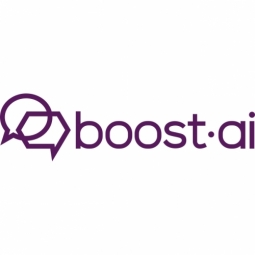
|
Transforming Customer Service in Air Travel: A Case Study on PLAY Airlines
The air travel industry has become increasingly complex, with customers demanding instant, personalized, and round-the-clock service. PLAY Airlines, a startup airline based in Iceland, recognized the need for a superior customer service solution that could handle a high volume of inquiries efficiently, provide 24/7 support, and scale up as necessary. The traditional phone-based customer service model was proving inadequate, leading to long wait times and customer dissatisfaction. The challenge was to replace this outdated model with a solution that could offer a frictionless experience, even during peak times or during disruptions like the Covid-19 pandemic.
|
|
|

|
Sector Alarm's Successful Transition to Conversational AI Across Multiple Markets
Sector Alarm, a leading European security company, was facing challenges with its customer service strategy. Despite having a robust omnichannel approach, the company identified inefficiencies in its live chat sessions, particularly in larger markets. Multiple agents were handling each chat session, often dealing with repetitive inquiries such as password resets or product information requests. The company estimated that agents were spending an average of two and a half minutes per chat searching for customers and updating the CRM. Sector Alarm had previously implemented a chatbot solution in 2018, but it was 'tech-heavy' and lacked flexibility. The company found it difficult to make necessary changes and updates without the frequent involvement of the IT department. The initial chatbot solution was not scalable and was unable to meet the growing demands of the company's customer service needs.
|
|
|

|
Alice's Customer Service Transformation with Freshdesk
Alice, a leading travel tech start-up and Israel’s largest online travel agency, was facing significant challenges in managing its customer service requests. Prior to implementing Freshdesk, Alice used a shared mailbox for all agents to handle customer service requests. This system lacked a logical ticket-tracking mechanism, leading to inefficiencies and difficulties in monitoring and following up on tickets. As Alice continued to grow, this mechanism proved inadequate. There were no set service level agreements for ticket resolution, no escalation process for high-priority tickets, and no automations or rules in place to improve efficiency. The lack of these features resulted in agents spending unnecessary time choosing which tickets to address, and a lack of visibility into the overall customer support process.
|
|




